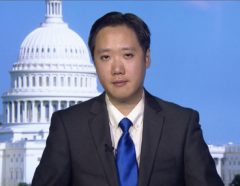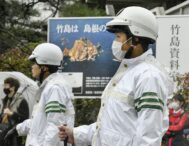Authors
Mintaro Oba

Mintaro Oba is a former U.S. diplomat and expert commentator on U.S. foreign policy in the Asia-Pacific region. He publishes and speaks on Asia policy issues and has been quoted in The New York Times, The Washington Post, BBC, and other major media outlets. His portfolio at the State Department included South Korea’s diplomatic relations with Japan, China and North Korea. He received his MA and BA in International Affairs from American University’s School of International Service.
Articles by Mintaro Oba

Japan - Korea
January — May 2020Pragmatic Stability, Latent Tensions
In the first months of 2020, Japan and South Korea maintained pragmatic stability despite a brief flare-up over travel restrictions. The need to prioritize recovery from COVID-19 weighed heavily in favor of both countries seeking to focus on domestic issues. With the landslide victory of the ruling Democratic Party in the April parliamentary elections in South Korea, it is not likely that Seoul’s approach to the bilateral disputes with Tokyo will undergo a fundamental change anytime soon. With the US presidential election now six months away, continuing stalemate in US-South Korea military cost-sharing talks and volatility surrounding North Korea form an important backdrop to uncertainties in the South Korea-Japan bilateral relationship. By September, we may know whether it is pragmatic stability or latent tension that is the defining force in South Korea-Japan relations in 2020.

Japan - Korea
September — December 2019Thaws and Tremors
If relations between Japan and South Korea were defined by “cold economics, cold politics” through the summer of 2019 (as we described it in the September issue of Comparative Connections), South Korea-Japan ties at the end of 2019 had begun a tentative thaw. Tensions between the two countries have fallen in the waning months of 2019 from their peak in the summer, when Japan imposed export restrictions on South Korea and Seoul Korea indicated its intent to withdraw from the General Security of Military Information Sharing Agreement (GSOMIA). Following a comparatively quiet but tense period in September and October, both countries took de-escalatory steps starting in November—most notably South Korea’s conditional decision not to withdraw from GSOMIA after all—that improved the atmosphere and created space for diplomacy.

Japan - Korea
May — August 2019Cold Economics, Cold Politics
It is hard to find anything truly unprecedented in a South Korea-Japan relationship that has long seen periods of elevated tension. That is what makes the recent escalation of disputes into the economic relationship a moment of outsize significance in the history of the relationship. As recently as the last update for Comparative Connections in May, we concluded that “South Korea-Japan economic and trade relations have remained … largely unrelated to political developments and driven by practical considerations.” That assessment reflected the fact that, however high the political tensions, there have been two unwritten red lines: first, allowing political tensions to harm existing, mutually beneficial security cooperation for deterring North Korean provocations, especially when working jointly with the US; second, bringing those tensions into the economic relationship. Over the last four months, those red lines have been blurred in a series of escalating retaliatory moves with direct consequences for both countries and the regional economic and security order as a whole.

Japan - Korea
January — April 2019Hitting an All-Time Low
In the early months of 2019, Japan-South Korea relations have continued a downward spiral. In their dealings with the radar lock-on dispute and a South Korean court ruling on forced laborers, both Seoul and Tokyo responded to the other’s action negatively, reaching the point of suspending all senior-level defense exchanges for the first half of the year. While recent developments may point to yet another period of all-time low in Seoul-Tokyo relations, it is possible that the year 2019 may signify the beginning of a new trend at a deeper level. That is, Seoul and Tokyo do not regard the other as a valued partner in their long-term national security strategy, even when addressing nuclear and missile threats from North Korea. On the Japan-North Korea front, once the biggest regional champion of the US “maximum pressure” campaign, Japan has continued to reckon with the region’s sudden turn toward diplomacy with North Korea and made some policy adjustments for better alliance coordination with the United States.

Japan - Korea
September — December 2018Unfortunate Circumstances and Escalating Tensions
Fall 2018 represented a turning point in Japan-South Korea ties as an uneasy truce between the two countries gave way to escalating tensions. South Korea’s Supreme Court ruled that two Japanese companies must compensate 10 South Koreans forced into labor during Japan’s occupation of the Korean Peninsula from 1910 to 1945. South Korea’s decision to dissolve the foundation built to implement the 2015 “comfort women” agreement between Seoul and Tokyo, though not unexpected, also added to the general atmosphere of growing tension. As 2018 came to a close, tensions flared as Japan alleged a South Korean Navy destroyer locked onto a Japanese Maritime Self-Defense Force plane with a radar used for targeting weapons – a claim Seoul vigorously denies. On the Japan-North Korea front, Prime Minister Abe’s willingness to meet Kim Jong Un characterized Tokyo’s response to the Trump-Kim summit amid increasing uncertainty concerning Japan’s role in talks on denuclearization of North Korea, but with no real change of Japan’s North Korea policy.